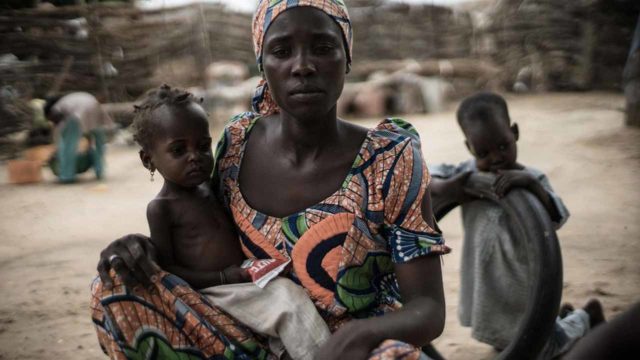The latest State of Food Security and Nutrition in the World (SOFI) published by the United Nations Food and Agricultural Organisation has revealed that 733 million people faced hunger in 2023, which is equivalent to one in eleven people globally and one in five in Africa.
The report published yesterday by five United Nations specialised agencies shows that the world has been set back 15 years, with levels of undernourishment comparable to those in 2008-2009 and warned that the world is falling significantly short of achieving Sustainable Development Goal (SDG) 2, Zero Hunger, by 2030.
It observed that despite some progress in specific areas such as stunting and exclusive breastfeeding, an alarming number of people continue to face food insecurity and malnutrition as global hunger levels have plateaued for three consecutive years, with between 713 and 757 million people undernourished in 2023, approximately 152 million more than in 2019 when considering the mid-range of 733 million.
The report further noted that the percentage of the population facing hunger continues to rise in Africa, 20.4 percent, remains stable in Asia 8.1 percent even though the region still represents a significant challenge as the region is home to more than half of those facing hunger worldwide.
From 2022 to 2023, hunger increased in Western Asia, the Caribbean, and most African sub regions.
FAO, the International Fund for Agricultural Development (IFAD), the United Nations Children’s Fund (UNICEF), the UN World Food Programme (WFP), and the World Health Organization (WHO) warned that if current trends continue, about 582 million people will be chronically undernourished in 2030.
They observed that the projection closely resembles the levels seen in 2015 when the Sustainable Development Goals were adopted, marking a concerning stagnation in progress.
The key findings in the report show that in 2023, around 2.33 billion people globally faced moderate or severe food insecurity, a number that has not changed significantly since the sharp upturn in 2020, amid the COVID-19 pandemic.
Among those, over 864 million people experienced severe food insecurity, going without food for an entire day or more at times.
This number has remained stubbornly high since 2020, and while Latin America shows improvement, broader challenges persist, especially in Africa where 58 percent of the population is moderately or severely food insecure.
The lack of economic access to healthy diets also remains a critical issue, affecting over one-third of the global population.
With new food price data and methodological improvements, the publication reveals that over 2.8 billion people were unable to afford a healthy diet in 2022. This disparity is most pronounced in low-income countries, where 71.5 percent of the population cannot afford a healthy diet, compared to 6.3 percent in high-income countries. Notably, the number dropped below pre-pandemic levels in Asia and in Northern America and Europe, while it increased substantially in Africa.
The report said: “Food insecurity and malnutrition are worsening due to a combination of factors, including persisting food price inflation that continues to erode economic gains for many people in many countries. Major drivers like conflict, climate change, and economic downturns are becoming more frequent and severe. These issues, along with underlying factors such as unaffordable healthy diets, unhealthy food environments, and persistent inequality, are now coinciding simultaneously, amplifying their individual effects.”
The theme for this year’s report “Financing to end hunger, food insecurity, and all forms of malnutrition” emphasises that achieving SDG 2 Zero Hunger requires a multi-faceted approach, including transforming and strengthening agrifood systems, addressing inequalities, and ensuring affordable and accessible healthy diets for all.
It calls for increased and more cost-effective financing, with a clear and standardised definition of financing for food security and nutrition.
The heads of the five UN agencies, FAO Director-General QU Dongyu; IFAD President Alvaro Lario; UNICEF Executive Director Catherine Russell; WFP’s Executive Director Cindy McCain; and WHO Director-General Dr. Tedros Adhanom Ghebreyesus, wrote in the report’s Foreword: “Estimating the gap in financing for food security and nutrition and mobilising innovative ways of financing to bridge it must be among our top priorities. Policies, legislation, and interventions to end hunger and ensure all people have access to safe, nutritious, and sufficient food (SDG Target 2.1), and to end all forms of malnutrition (SDG Target 2.2) need significant resource mobilisation.
“They are not only an investment in the future, but our obligation. We strive to guarantee the right to adequate food and nutrition of current and future generations.”


















